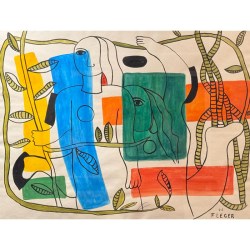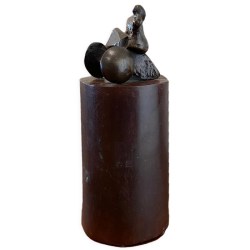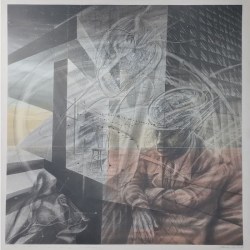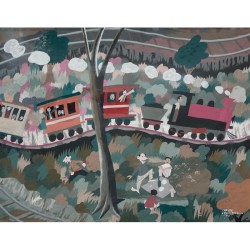Bio

Silk screen
It was a Cuban painter. Is now considered one of the leading figures in Cuban art and one of the leading artists of the twentieth century in Cuba. His painting subjects are often related to Afro-Cuban tradition, approached from a perspective poética.1 His style, characterized by vibrant colors, has been considered baroque root.
His works are in the most prestigious museums in the world, he is among the most famous painters of Cuba by the inexhaustible wealth creation. Made over 20 solo exhibitions and 60 collective.
Biography
Born in El Cerro, one of the suburbs of Havana. Although he attended classes at the Academy of Fine Arts San Alejandro, his training was primarily self taught. He made his first exhibition in the Lyceum of Havana in 1934. He later worked in the Free Study Painters and Sculptors of Havana, along with Mariano Rodríguez.2 Linked to the generation of poets of the "group of Origins", drawings published in various literary journals, as Verbum, Silver Spur and Origins . During this time he published two books: Masks (1935) and Sleep (1939), the second of which also included texts pintor.3 was a friend of the poet José Lezama Lima, who wrote several texts on the work of Portocarrero.
In 1943 he taught freehand drawing in Prison in Havana, where he painted a mural with religious themes. During these years he also began work cycles, with titles like Home on the Hill, Feasts and Figures for a contemporary mythology.
In 1944 he exhibited his works in New York at the Julien Levy Gallery and the Museum of Modern Art. Later became interested in Cuban popular festivals, theme to which he devoted a series of pastels. By 1950 he began working in the pottery decoration in the Experimental Workshop in Santiago de Las Vegas. With this technique conducted a large mural, titled History of the Antilles, for the Havana Hilton Hotel (now Habana Libre).
In 1951 he received the National Award for her painting Painting Tribute to Trinidad, now in the Museo de Bellas Artes de Cuba, which marks the beginning of a series of landscapes inspired by the Cuban capital, called "Landscapes of Havana."
In 1962, opened the exhibition "Color Cuba", on the basis of Afro-Cuban Santeria. The Cuban carnival was the theme of another of his series of paintings, "Carnival" (1970-1971).
Participated in the Bienal de São Paulo in 1957 and 1963, and in Venice in 1952 and 1966.
Portocarrero lived openly in a relationship with another artist, Raul Milian, for decades.
Awards
Throughout his career, René Portocarrero received numerous awards and distiniciones. These include the International Award Sambra awarded in the São Paulo Biennial 1963, the Order of Culture of Poland, the Order of Cyril and Methodius, granted by the government of Bulgaria, in 1976, the Felix Varela Order of the Republic Cuba, in 1981, and the Aguila Azteca, the highest honor granted by the Mexican Republic (1982).







